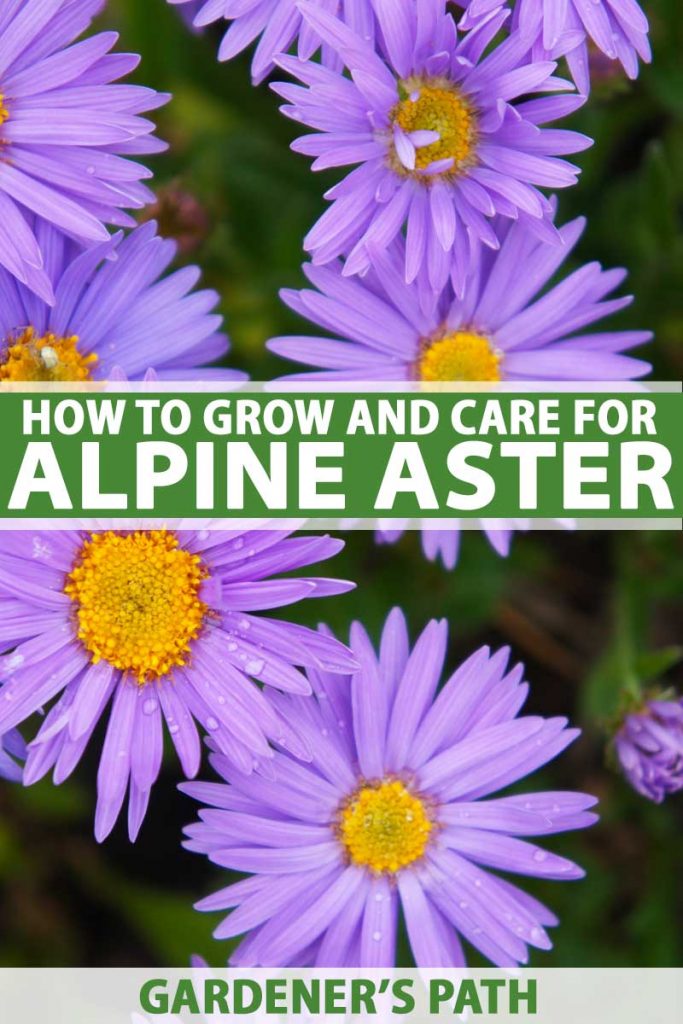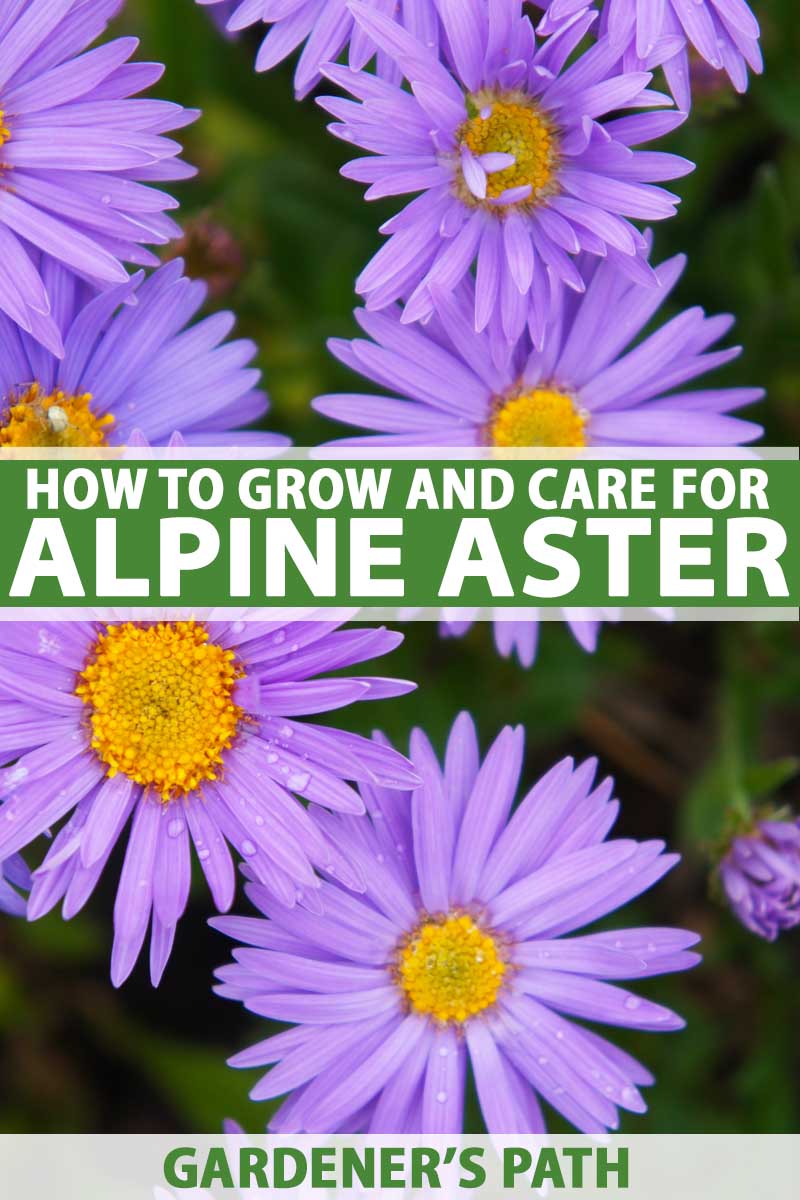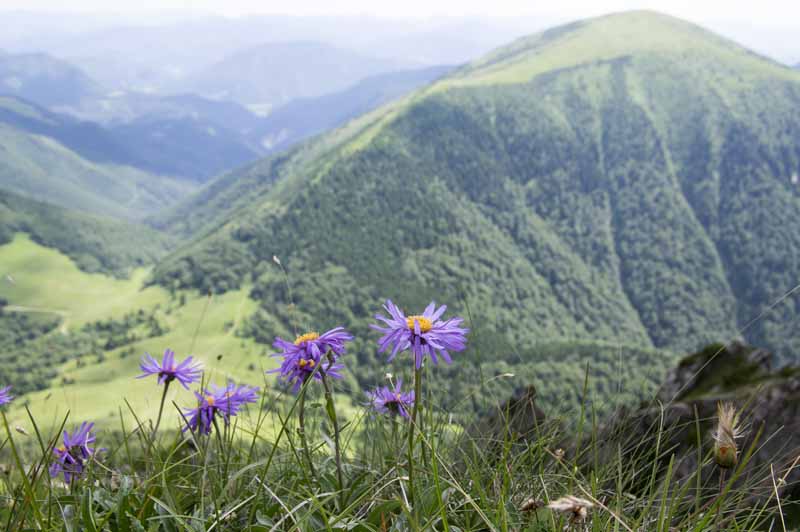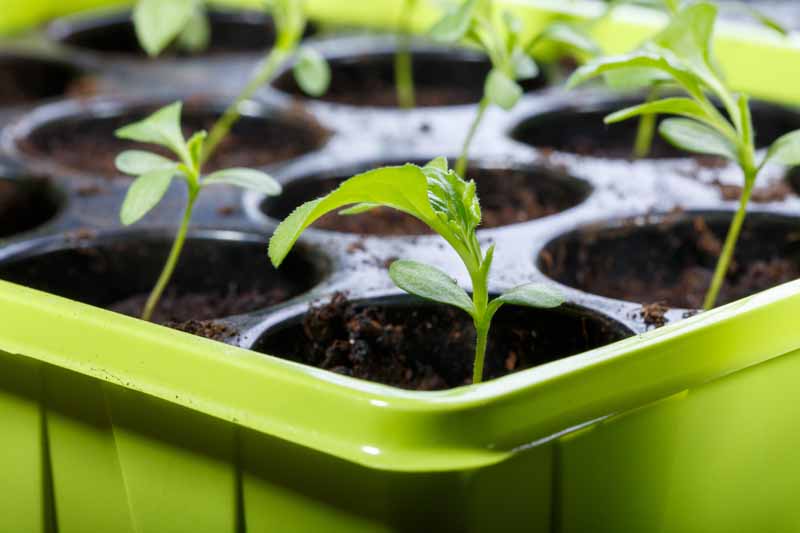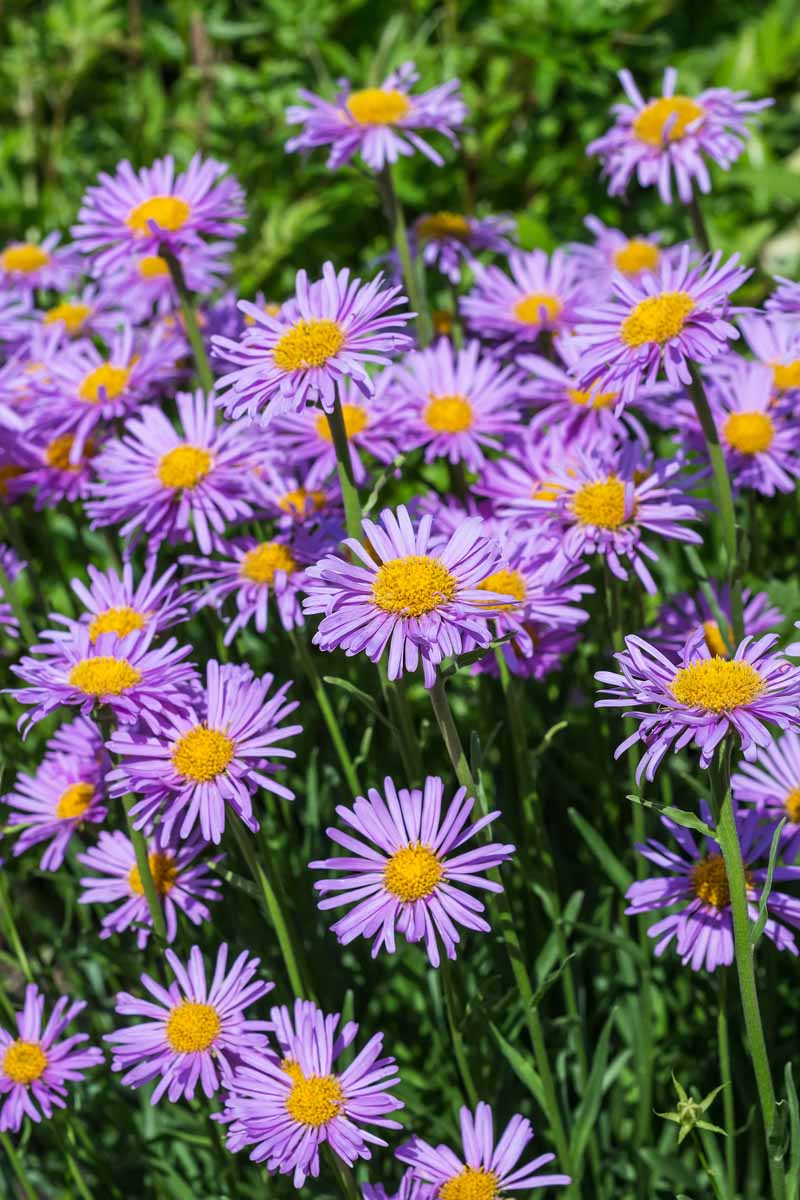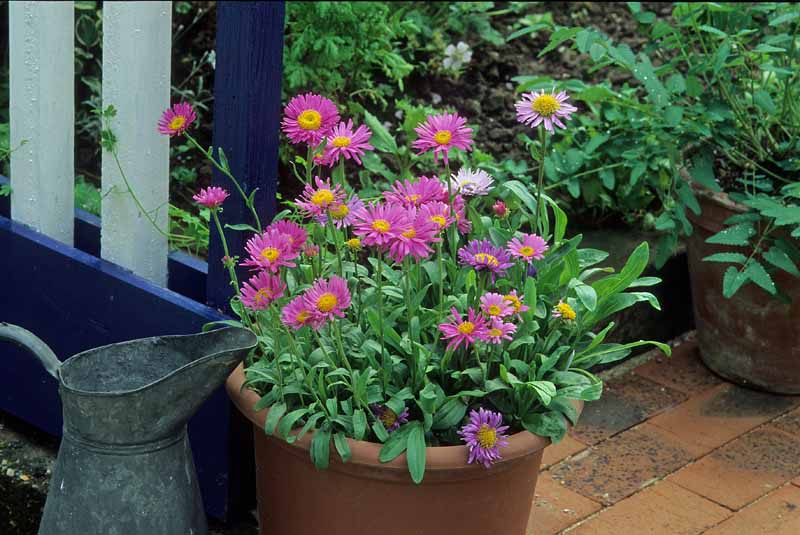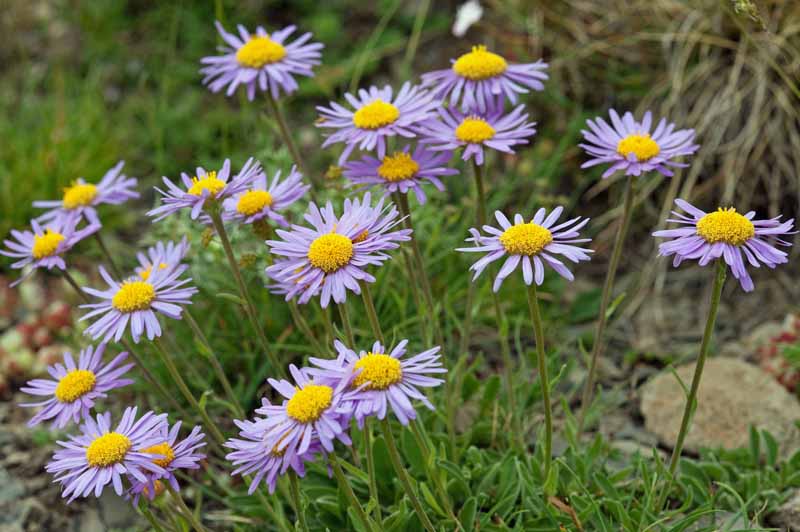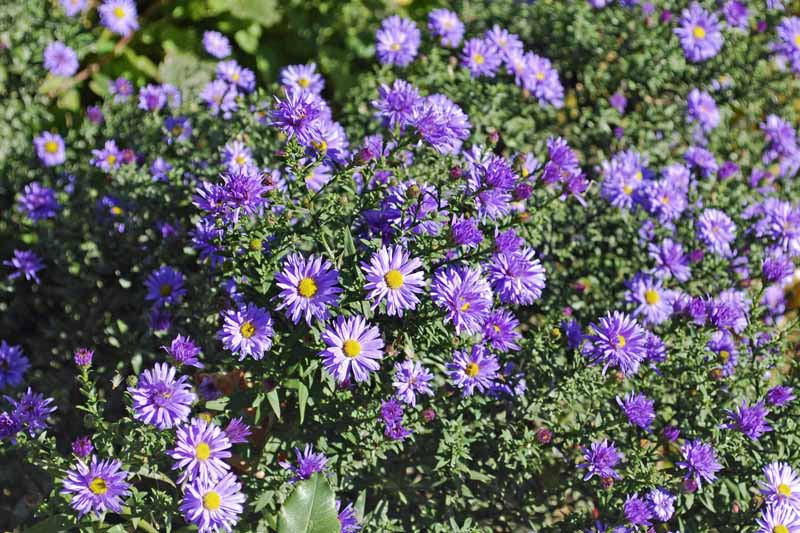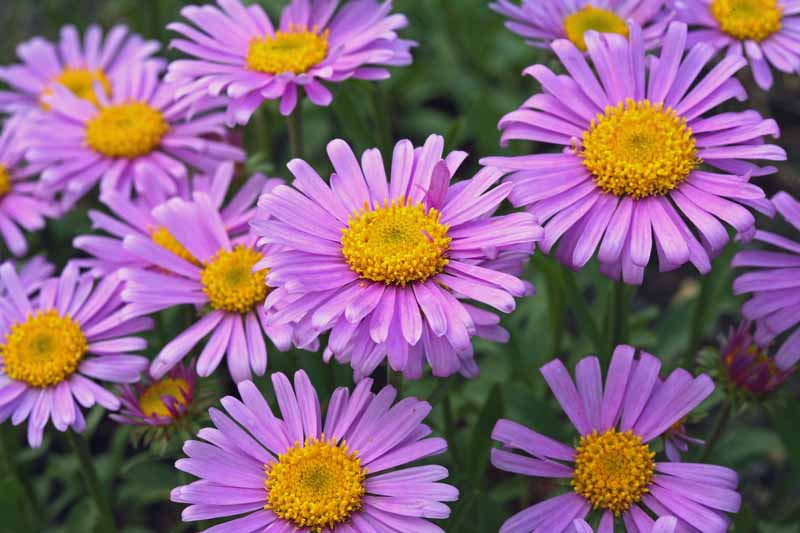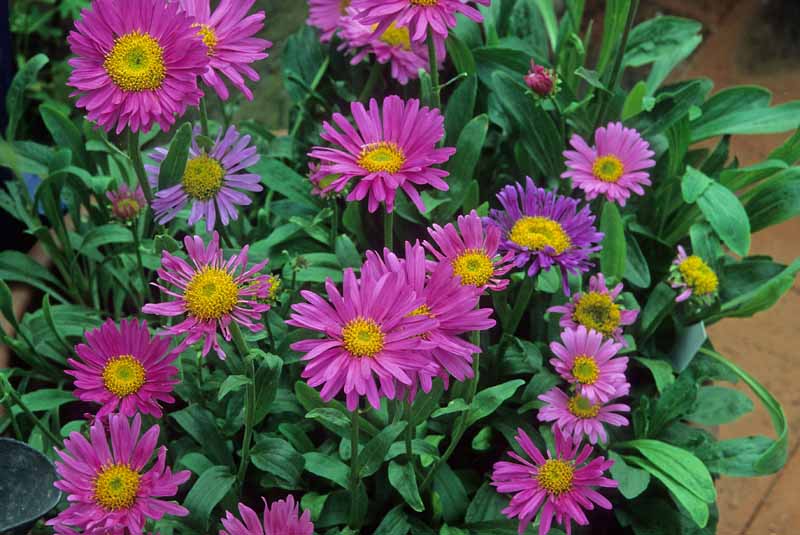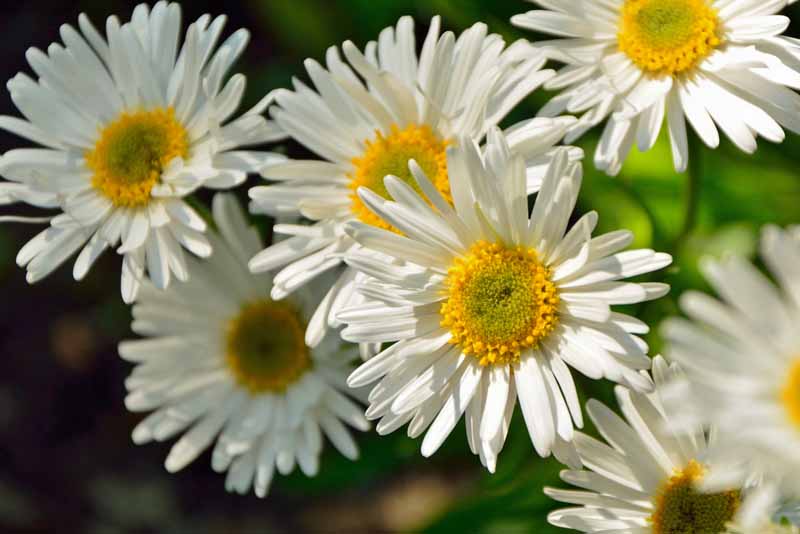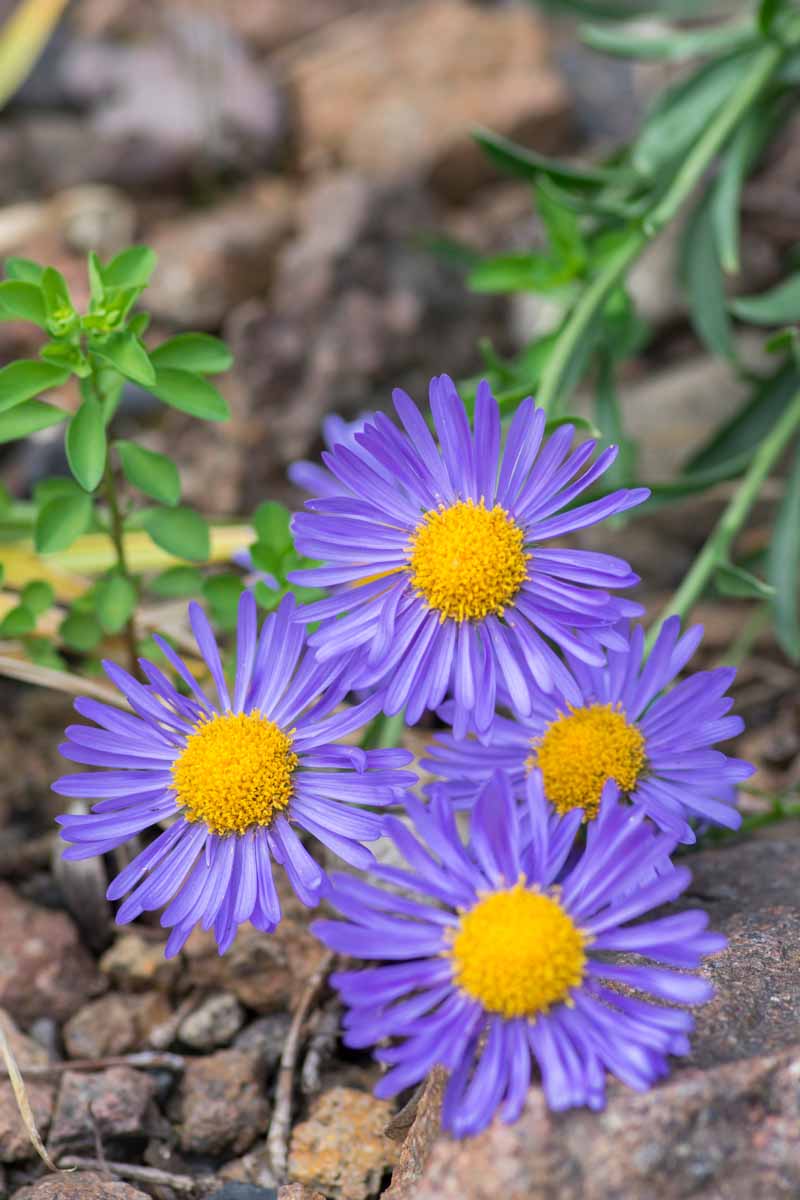This herbaceous ornamental species is unique for having an early bloom time, low profile, and single blossom per stem. We link to vendors to help you find relevant products. If you buy from one of our links, we may earn a commission.
Cultivation and History
Best suited to USDA Hardiness Zones 4 to 7, A. alpinus thrives in full sun with average to poor, well-draining soil. Bloom time is from late spring to early summer, and sometimes mid-summer. Mature dimensions average eight to 12 inches tall and wide. This species is native to the mountains of China and Europe, including the Alps. A few subspecies may be found in the wild in Canada and parts of the western United States and Alaska, including the Plumas alpine aster, Oreostemma elatum (Greene) Greene, and Vierhapper’s aster, A. alpinus var. vierhapperi (Onno) Cronquist. Unlike many aster species that produce clusters of flowers, the blossoms of A. alpinus are borne on individual stems, like daisies.
Propagation
This species grows from seeds, cuttings, and divided plants.
Seeds
Start seeds indoors to give them a jump start on the growing season. Scatter them on moist soil and tamp lightly, barely covering them. Expect germination in two to four weeks. Transplant seedlings to their permanent location after the last average spring frost date. Note that seed from a native species produces a replica of its parent plant. However, seed harvested from a cultivar that has been selectively bred for particular traits, or crossed with another type to create a hybrid, does not produce true from seed, and may even be sterile.
Cuttings
Once plants get underway in spring, take cuttings from stems with new leaf growth. Dip the ends into rooting hormone and place into potting medium. Once roots are established and the cuttings begin to grow, you may plant them permanently. Propagation by cuttings is one way to reproduce the traits of a cultivar or hybrid.
Division
Divide your plants in early spring, once you see them coming up again. Slice down into a clump with a sharp spade and remove a portion of the plant with roots attached. Transplant the divided section(s) immediately. Dividing plants ensures the replication of parent plant characteristics. Be sure to maintain even moisture during the propagation stage of growing. Read more about dividing perennial asters here. To replicate the exact traits of a cultivated variety, propagate by cuttings or division only. Please note: If you are growing a native species, seeds will normally replicate the characteristics of the parent plant. However, if you harvest seeds from varieties that have been cross-bred, called hybrids, the seeds won’t replicate the parent plant, but will revert back to one of the crossed species.
How to Grow
To successfully cultivate A. alpinus, choose a location that receives full sun. Poor to average soil is adequate, as this plant does not crave nutrients. The soil should drain well and have a pH of about 6.0 to 7.5. Asters don’t mind a little acidity. Space your seeds, seedlings, cuttings, or divisions at least 12 inches apart to accommodate mature dimensions and allow for adequate air flow. As with the propagation phase, maintain even moisture until your transplants become established. At that point, watering needs are minimal and plants exhibit a high degree of drought tolerance. Unlike some native species, this type is not likely to become a weedy menace. While it does self-sow, it is a slow grower that is not considered to be invasive. You may also grow this type in well-draining containers, either alone or with companions of a similar culture. Some suggestions are:
Sweet alyssumCreeping thymeRock cressTwinspur
Containers should exceed plant(s)’ mature dimensions by at least two inches in diameter to allow room for watering and airflow. Remember that containers dry out more quickly than ground soil, so although these plants are drought tolerant, water before they completely dry out.
Growing Tips:
Poor soil is preferredNo fertilizer is needed12-inch spacing promotes good airflowWater needs are low once established, but higher for container plants
Care and Maintenance
As we’ve said, once established, A. alpinus is relatively self-sufficient. However, while it is drought tolerant, it’s not a huge fan of humidity. This is where adequate drainage and proper spacing come into play, as ways to minimize the potential for fungal growth from excess moisture and inadequate air flow. Another good way to maintain ample circulation is to divide mature plants every few years. An added benefit is the revitalization of the main plant. You may also want to deadhead spent blossoms to minimize self-sowing, particularly with cultivars and hybrids that may be fertile and not produce true to seed. And finally, while this plant is drought tolerant, that doesn’t mean it won’t appreciate a drink in a dry spell, especially if it’s in a container. Read more about managing perennial asters here.
Cultivars to Select
When shopping for plants or seeds, you’re likely to find listings for alpine aster, A. alpinus, or dwarf aster. Following is usually a generic color such as “pink,” “purple,” “white,” or “mixed.” However, there are also named cultivars available. Cornell University’s Home Gardening Flower Growing Guides cites six noteworthy selections:
Beechwood
This cultivar has lavender petals resembling those of the native New England aster. However, flower heads are borne on individual stems instead of in bushy clusters, and heights are in inches instead of feet, for a low-profile, far less aggressive aster.
Dark Beauty
This purple cultivar also resembles the New England species, only this time, in a dark shade of purple. The early bloom time, low profile, and single blossom per stem remind us it’s an alpine. And, although it self-sows like other aster species, it grows slowly and is not considered to be invasive.
Goliath
Another you may come across is ‘Goliath,’ which has lavender flowers that shade toward blue. This is a slightly larger plant that exceeds the typical eight to 12 inches, reaching a height of approximately 15. In addition, this cultivar bears especially large blossoms that measure up to three inches across, more like those of a China aster than a typical one-inch A. alpinus blossom.
Happy End
Each purple-hued cultivar is slightly different, and this one’s claim to fame is its distinctive pink-purple double-rayed flower head. And the fuller look is not its only key feature. The growth habit of this kind is especially compact.
Wargrave
If pink is more your color, you may like this one best. Pink rays display a blush of purple for greater depth.
White Beauty
The flower heads of this cultivar are snowy white, an aster color with which you may not be familiar. White flowers flawlessly integrate a variety of pastel shades and can also soften the intensity of bold-color blooms. And with their daisy-like appearance, they make a cheerful addition to the spring to summer garden, and the anticipation of warmer days to come.
Managing Pests and Disease
Asters in general are not prone to problems. However, if too much moisture builds up due too poor drainage, they may fall victim to nibbling nematodes, slugs and snails. An application of food grade diatomaceous earth is an excellent way to combat root-feeding pests. In addition, too much moisture plus inadequate air circulation due to poor spacing may make plants vulnerable to fungal conditions like powdery mildew, rust, fusarium or verticillium wilt, or white smut. A biological fungicide may be useful against the ravages of fungal disease. It may also keep the dreaded aster leafhopper at bay, an insect that transmits a fatal condition called aster yellows. As for wildlife, you may find it necessary to take measures to prevent damage from deer and rabbits that find the tender shoots tasty. Your best defense is a good offense. To maintain optimal health:
Best Uses
Low-profile, early-blooming A. alpinus has low water and maintenance needs, making it suitable for xeriscaping. It does equally well in rock gardens, containers, and fronts of borders, provided the soil drains well. It’s a welcome addition to the garden because it attracts beneficial wildlife like bees, birds, and butterflies. With its ability to tolerate cold, drought, and poor soil, this rugged little gem deserves a place in your spring-to-summer landscape. And it grows slowly, unlike some fall asters, so it won’t wear out its welcome. Will it be pink, purple, or white? Why not mix and match? Introduce this Alpine treasure to your outdoor living space today! Then come back and share your pictures in the comments section below! For more aster inspiration you’ll need these guides next:
When and How to Save Perennial Aster Seeds11 Perennial Aster Species for Summer’s Last HurrahHow to Grow Tatarian Aster: A Dynamic Late Season Bloomer11 of the Best Pink Aster Varieties
